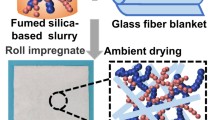The space holder technique was widely used in manufacturing high melting-point porous metals. Corn powders with a smaller size (11.4 μm on average) than that of iron powders (25.5 μm on average) were used as a space holder. Porous irons having microporosities between 37.9% and 48.9% were produced after sintering at 1100–1250°C for 2 h. The amount of increase in microporosity was much less than the corn volume fraction because some corn powders scattered in micropores already formed between the iron powders. The volumetric shrinkage increased with the corn addition and/or the sintering temperature. In addition, the compressive yield stress was 108 ± ± 8 MPa, 77 ± 26 MPa, and 61 ± 31 MPa for corn additions of 0, 20, and 40 vol.%, respectively. The high sintering temperature could reduce the negative effect of corn addition on the yield stress. Perfect contacts between iron powders were observed at 1250°C, indicating that a high temperature was necessary to obtain excellent mechanical properties for this kind of porous irons.











Similar content being viewed by others
References
J. Banhart, “Manufacture, characterization and application of cellular metals and metal foams,” Prog. Mater. Sci., 46, No. 6, 559–632 (2001).
L.J. Gibson and M.F. Ashby, Cellular Solids: Structure and Properties, Cambridge University Press, Cambridge (1997), pp. 6–7.
J.P. Li, S.H. Li, K. de Groot, and P. Layrolle, “Preparation and characterization of porous titanium,” Key Eng. Mater., 218–220, 51–54 (2001).
S.T. Szyniszewski, B.H. Smith, J.F. Hajjar, B.W. Schafer, and S.R. Arwade, “The mechanical properties and modeling of a sintered hollow sphere steel foam,” Mater. Des., 54, 1083–1094 (2014).
M. Barrabés, P. Sevilla, J.A. Planell, and F.J. Gil, “Mechanical properties of nickel–titanium foams for reconstructive orthopedics,” Mater. Sci. Eng. C, 28, No. 1, 23–27 (2008).
W. Niu, C. Bai, G. Qiu, and Q. Wang, “Processing and properties of porous titanium using space holder technique,” Mater. Sci. Eng. A, 506, No. 1–2, 148–151 (2009).
B.Ye and D.C. Dunand, “Titanium foams produced by solid-state replication of NaCl powders,” Mater. Sci. Eng. A, 528, No. 2, 691–697 (2010).
Y.Y. Zhao, T. Fung, L.P. Zhang, and F.L. Zhang, “Lost carbonate sintering process for manufacturing metal foams,” Scripta Mater., 52, No. 4, 295–298 (2005).
Z. Esen and S. Bor, “Processing of titanium foams using magnesium spacer particles,” Scripta Mater., 56, No. 5, 341–344 (2007).
N. Bekoz and E. Oktay, “Effects of carbamide shape and content on processing and properties of steel foams,” J. Mater. Process. Technol., 212, No. 10, 2109–2116 (2012).
N. Bekoz and E. Oktay, “Mechanical properties of low alloy steel foams: Dependency on porosity and pore size,” Mater. Sci. Eng. A, 576, 82–90 (2013).
A. Laptev, M. Bram, H.P. Buchkremer, and D. Stöver, “Study of production route for titanium parts combining very high porosity and complex shape,” Powder Metall., 47, No. 1, 85–92 (2004).
S.A. Tsukerman, Powder Metallurgy, Pergamon Press, Oxford (1965), p. 87.
G.S. Upadhyaya, Powder Metallurgy Technology, Cambridge International Science Publishing, England, UK (2002), p. 70.
Z. Esen and S. Bor, “Characterization of Ti–6Al–4V alloy foams synthesized by space holder technique,” Mater. Sci. Eng. A, 528, No. 7–8, 3200–3209 (2011).
Y. Torres, J.J. Pavón, I. Nieto, and J.A. Rodríguez, “Conventional powder metallurgy process and characterization of porous titanium for biomedical applications,” Metall. Mater. Trans. B, 42, No. 4, 891–900 (2011).
Y. Torres, S. Lascano, J. Bris, J. Pavón, and J.A. Rodriguez, “Development of porous titanium for biomedical applications: A comparison between loose sintering and space-holder techniques,” Mater. Sci. Eng. C, 37, 148–155 (2014).
B. Wang and E. Zhang, “On the compressive behavior of sintered porous coppers with low-to-medium porosities—Part II: Preparation and microstructure,” Int. J. Mech. Sci., 50, No. 3, 550–558 (2008).
Acknowledgement
This work was supported by the National Natural Science Foundation of China (Grant No. 51478380).
Author information
Authors and Affiliations
Corresponding author
Additional information
Published in Poroshkova Metallurgiya, Vol. 58, Nos. 5–6 (527), pp. 40–48, 2019.
Rights and permissions
About this article
Cite this article
Su, M., Wang, H., Zhou, Q. et al. Microstructural and Mechanical Characteristics of Porous Irons Produced with Small Particle Size Corn Starch. Powder Metall Met Ceram 58, 278–284 (2019). https://doi.org/10.1007/s11106-019-00071-2
Received:
Published:
Issue Date:
DOI: https://doi.org/10.1007/s11106-019-00071-2




